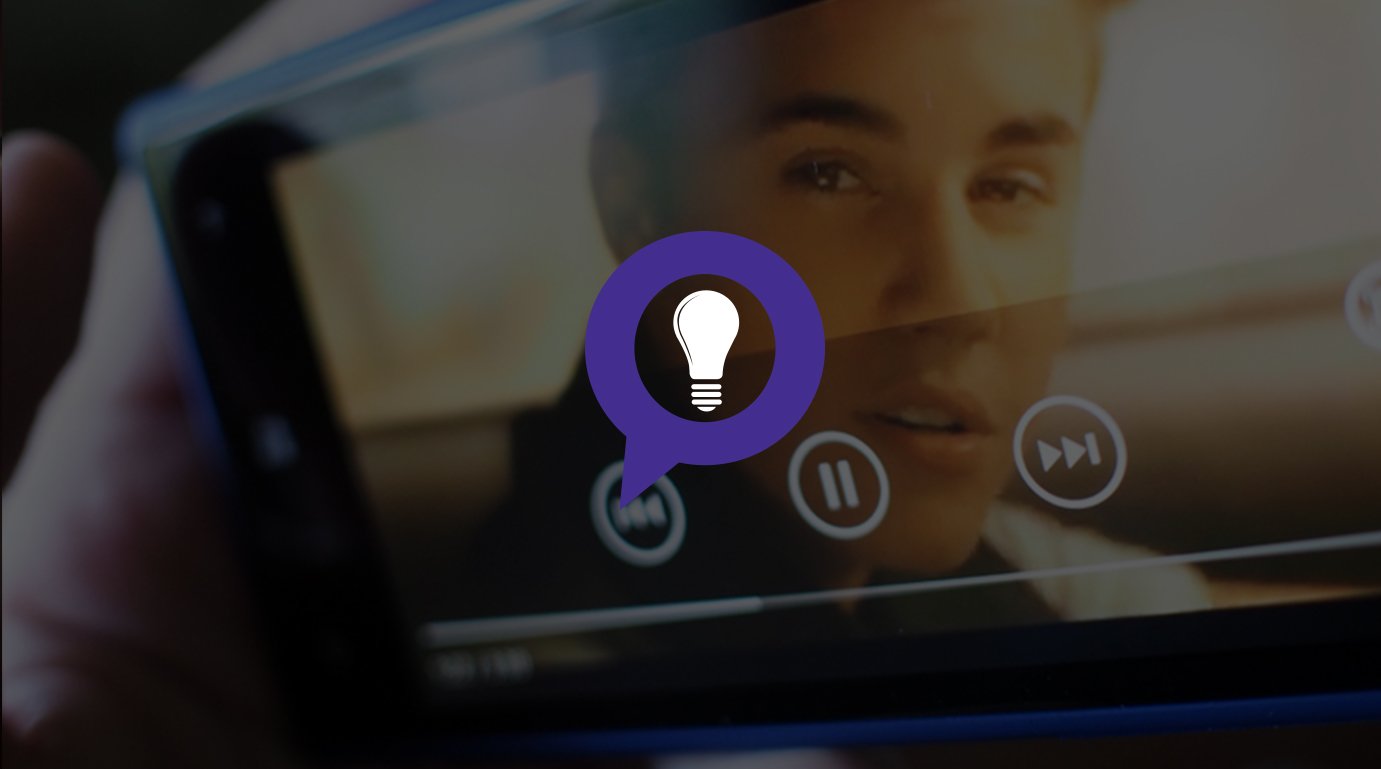How smartphones killed the camcorder - Talk Mobile

Presented by BlackBerry
Talk Mobile Creativity
How smartphones killed the camcorder
While many of us owned standalone cameras, be they point-and-shoots or DSLRs (or even going back to ye olde days of film SLRs), far fewer ever owned a standalone video camera. The camcorder was always a far more bulky and balky beast, requiring massive batteries and recording onto magnetic film cassettes and then smaller cassettes and then removable hard drives and large flash disks before finally getting to the point where something like an SD card was a viable option.
Digitization and miniaturization solved the bulky problem, but no amount of SD cards or flip-out touch screens seemed to be able to fix the balky problem, or the price. When smartphones with integrated cameras started showing up in the hands of consumers around the globe, the traditional camcorder was put on just as much notice as the point-and-shoot photo camera.
But are smartphones good enough to replace the camcorder? And with everything that smartphones can do, is it feasible to edit video on one? Can you really use a smartphone to stream live video to the web? And how do we keep our videos safe in this ever-connected digital age?
Let's get the conversation started!
Get the latest news from Android Central, your trusted companion in the world of Android
by Rene Ritchie, Daniel Rubino, Kevin Michaluk, and Phil Nickinson





Mobile Video
Articles navigation
- Camcorders
- Video: Michael Seibel
- Mobile editing
- Live streaming
- Video: Derek Kessler
- Video privacy
- Conclusion
- Comments
- To top

Daniel Rubino Windows Phone Central
Why carry a camcorder when you have a smartphone?
Smartphones pose a significant threat to the traditional video camera market. Smartphones are practically ubiquitous and almost universally come with video recording capabilities. They make it easy to upload directly to YouTube or Vine or Instagram, and mobile is just more fun, accessible, and fast than a dedicated camcorder. The consumer camcorder is in the same basket as the point-and-shoot camera, which is being tossed over a cliff by modern smartphones.
The consumer camcorder is in the same basket as the point-and-shoot camera: tossed over a cliff by modern smartphones.
Want to upload that video you just shot on your dedicated video camera? Wait until you're home, buddy. Or you could do it now with your smartphone and get instant satisfaction with virtual high fives from your friends and family.

VGA to 1080p to 4K
In the early years of television, standards actually differed around the globe. Two standards came to dominate, with NTSC being the standard in North America and parts of South America, while PAL/SECAM was the standard elsewhere. The "standards" were loose, as the pixels of an analog CRT television weren't exactly defined. With the advent of digital signaling, NTSC adopted a 480x640 pixel standard, while PAL/SECAM went for a higher resolution with non-square pixels at 576x720. HDTV soon followed, bringing true high definition with 16:9 video with defined global standards of 720p and 1080p, topping out at 1920x1080 pixels. 1080p HD has ruled the roost for the better part of a decade, and now 4K UHD is coming onto the scene. UHD promises 4 times the resolution of 1080, with displays packing 3840×2160 pixels.
Similarities to the DSLR arise here too. Professional or prosumer video cameras will always be better quality than a small smartphone, but that market will shrink as mobile devices become better and cheaper. Case in point, Samsung's Galaxy S4 Zoom's real telephoto lens or Nokia's Lumia 1020 with it's 41MP sensor for lossless digital video zoom. Samsung's soon-too-launch Galaxy Note 3 supports 4K video recording, something that few consumer-priced dedicated cameras can claim (adoption has even been slow at the professional and prosumer levels).
A few years ago, jamming such technology into a phone would have been unthinkable, but now it's a reality. When merged with expansive LTE networks and apps and services that make it easier than ever to upload and share the final result, there's little surprise in seeing mobile phones take over the consumer video camera market.
Are they better than a dedicated video camera? Nope. But are they good enough? Yup.
What innovations will come in 2014? Better, larger sensors. Faster processors. More optical image stabilization for jitter-free recording, increased concentration on quality audio recording (high-amplitude audio capture), and more. While traditional video cameras will continue to have a market, that market will shrink in the coming years and it's only because of the smartphone.

Smartphones have already taken over the video capture space.
- Michael Seibel / Founder and CEO of Socialcam at Autodesk
How have smartphones changed how you record videos?
876 comments


Phil Nickinson Android Central
Mobile video editing is good for the most basic
The question we have to ask ourselves these days isn't "Can I do this on mobile?" but "Is it easier to do on mobile?" There's no cut-and-dry answer when it comes to editing video. First you have to ask yourself how much editing you intend to do.
Anything more complicated than setting the start and end points — and perhaps chopping out a section — then I'm probably going to go the desktop route instead of mobile.
One reason for that is simply screen real estate. I need pixels. And I need large displays. (And, usually, I need more than one display.) I need the precision of a mouse and a keyboard. No matter how great the phone or tablet, it's just not a replacement for a desktop editing suite. Ever. Not in power, not in features.

High-Definition Multimedia Interface
Following up on years of competing multi-plug standards in VGA, DVI, Component, and Composite inputs, the High Definition Multimedia Interface - commonly known as HDMI - brought a single-plug HD video and audio plug to the consumer electronics masses.
Since its launch in 2002, HDMI has found a home in more than 3 billion devices, connecting the likes of Blu-ray players, game consoles, cable boxes, laptops, and even smartphones to all manner of displays. The current HDMI 1.4 standard can carry content up to 4K (in 3D at that), along with eight audio channels (for 7.1 surround sound).
Some mobile devices like the BlackBerry Q10 and Z10 include a Micro HDMI port. This Type D port contains all 19 pins of the standard HDMI interface, though in a miniaturized form factor. Several other devices on the market use MHL, which outputs HD video and audio through a Micro USB port, using multiplexing to send multiple signals over each of the USB port's four connections.
But in a pinch? Sure. It's not unlike photo editing - a smartphone and its apps will do just fine if you're on the go, but there's no replacement for some quality time with Photoshop on a computer.
I've seen traditional news organizations mandate that video be shot, edited and uploaded from an iPhone. Shooting I get. As we've already discussed, the best camera is the one you have with you. But editing is another story. If the news is urgent enough that it has to get up right this second, then I'd upload the raw and let someone else sort it out.
If I have an extra 5 or 10 minutes, I'd take the time to do proper editing on a laptop.
If I have an extra 5 or 10 minutes, I'd take the time to do proper editing on a laptop. A 13- or 15-inch laptop (or whatever floats your boat) beats a 4- or 5- or 6-inch display. Period. You get more processing power. Editing apps are more full-featured. That's not to say you can't get a good finished product off a mobile device. There are any number of examples out there. But for most folks, I'm willing to bet you can get something better (and edit it easier) with a real computer.
Is editing video feasible on mobile? Sure. The question I always ask myself is, "Should I be using my phone or tablet instead of a proper editing suite?"
Talk Mobile Survey: The state of mobile creativity


Rene Ritchie iMore
How bandwidth is holding back mobile live streaming
Live streaming is the bleeding edge of video. It's the single most fragile, failure-prone, magnificent thing we've ever done. Whether it's one person on a laptop camera from a hotel, or multiple people on a 3-camera setup from a show floor, it'll push the boundaries of whatever you have available to you.
The biggest challenge is bandwidth. It's easy to record video locally, it's another thing entirely to broadcast it live to the world. Mostly that's because, as anyone who's ever been to a hotel or tradeshow will tell you, bandwidth sucks. If you can't even check email or Twitter, how the heck can you send your smiling face around the world?
It's easy to record video locally, it's another thing entirely to broadcast it live to the world.
Ethernet is the golden ring. Typically, if you can get on ethernet, you have a shot. The problem is that ethernet isn't widely available at most places. Many hotels have gone Wi-Fi only, especially in public areas, and a tradeshows, ethernet is expensive, requiring a setup from whomever is running the show.

YouTube Live On Air
For much of YouTube's 8-year history, the site has been focused on streaming content already stored on its servers. With more than 4 billion video streamed every day from YouTube, it is still and will long continue to be a foundational part of YouTube's business. In 2010 YouTube began experimenting with live video streaming, broadcasting a handful of sports matches, concerts, and political events. In 2012, YouTube partnered with NBC to broadcast the 2012 Summer Olympics from London. The effort included multiple simultaneous live streams, some of which were watched by over a million people at once. The first week of the 2012 Olympics saw YouTube streaming live competitions to 34 million viewers. In 2013, YouTube began opening up live streaming to the broader uploader base, first in May bringing the feature to users with more than 1,000 subscribers, and then in August dropping the threshold to 100 subscribers. YouTube live streaming is also an integral part of Google+ Hangouts On Air, allowing multiple users to broadcast their video chats live to the web.
We managed to get a direct line at BlackBerry Live, and thanks to BlackBerry and John P. and the Geekbeat.TV team, we managed to broadcast hours and hours of CrackBerry Live TV - and an iMore show! That's almost ideal circumstances. We've been at other shows where we couldn't even get Wi-Fi enough to upload a video to YouTube, never mind stream live.
Others have tried 3G/LTE, but that can be even less reliable than Wi-Fi, and tremendously expensive. You can potentially overcome the reliability issue by hooking together one of every connection from every carrier - people have done it! - but then the expense soars.
That's why I said bleeding edge of video. It's absolutely the future, it's just not quite here yet.

It's not the size of the pipe that's a problem anymore, it's how much you're allowed to put through it.
- Derek Kessler / Managing Editor, Mobile Nations
Do you have any interest in live streaming from your smartphone?
876 comments


Kevin Michaluk CrackBerry
Before you record that video…
While this is all about mobile video, a few days ago we tackled mobile photography; Rene looked at backing up photographs and Phil how to ensure your *ahem* personal photos don't end up in the wrong hands. Much of what was said there applies here, and it's almost entirely a matter of common sense.
While photos can be damaging, video that can be damning. It's too easy to convincingly manipulate a photo, but video is harder to fake (though amateurs are getting exceedingly good - remember the eagle snatching the baby up in the park?). If a damning video ends up online it's probably the real McCoy and bite you in the ass.
If you don't want a video to end up where it doesn't belong, don't record it in the first place.
Common sense rules apply here. If you don't want a video to end up where it doesn't belong, don't record it in the first place. If you do record it, don't share it. If you do share it, once that video has left your phone, accept that it's beyond your control and there's nothing you can do to stop it from spreading. Just use common sense.
When it comes to photos, backup has been made stupid easy. Video, thankfully, has been made easy too. It's not as easy as photos, but it's damn close. If you're on iOS and loving how Photostream shuttles your photos through the cloud and to your computer, you won't get that for video.

Going viral
It used to be that "going viral" was a bad thing, with the connotation of a disease spreading at epidemic rates through the population. That phase has been adopted for online video, denoting videos that have exploded in popularity and views, spreading from person to person as they're shared and reshared. The first viral videos predated YouTube and every other video sharing site popular today by several years: including the creepy dancing CGI baby of 1996, or All Your Base Are Belong To Us of 2000. The ease of use of sites like YouTube and the expansion of broadband connectivity led to an explosion in the popularity of said sites, and even more viral video sharing. Viral video has led to some amazing moments, including United Breaks Guitars, TED, Numa Numa, and Lazy Sunday. But viral video also has a dark side. The "Star Wars Kid" was relentlessly tormented by his classmates after the video ended up online, the success of the Kony 2012 video nearly wrecked the Invisible Children organization, and brought Justin Bieber to the world's attention.
Thankfully there are other options, such as Dropbox, Microsoft SkyDrive, and Google Drive, all of which support backing up videos to their services. How automatic that's going to be varies by the service and, more importantly, by the operating system on which it's been installed, but by-and-large you'll be able to back up your captured-on-the-go videos to the cloud and then have them automatically downloaded to your computer for hardcore editing and permanent storage.
Just as with the photos - and anything on your computer, a local copy and a cloud backup aren't enough. You should have a local backup system in place too, even something as simple as an external USB hard drive. There's just one thing: videos can get really big, really fast (especially on that new Samsung Galaxy Note 3 with its ridiculous 4K video recording), so if you're planning on uploading your videos to a cloud server, keeping them on your computer, or even keeping them on your phone, you're going to want to consider having a lot storage space available.
How do you ensure your private videos don't end up online?
876 comments

Conclusion
We're approaching the point where a smartphone can easily replace a point-and-shoot camera, and if you know what you're doing, can serve in the place of even a DSLR in a pinch. But replacing video cameras is a different matter - there's more specialized hardware at play, especially in the professional space. But, again, if you know what you're doing (and have a good tripod and/or track on which to mount), there are modern smartphones that can stand in. Nokia, for one, has been rather fond of publicly putting their cameras to test in places like dark high-contrast venues like crowded concert spaces, somewhere you'd normally find a cameraman with a massive video camera mounted on a beefy tripod.
But for the use of average people, the smartphone video camera has proven to be more than adequate. The whole new user experience created with the advent of touchscreen smartphones has changed how we record video, and social media sharing of videos on YouTube, Facebook, and Vine has changed why we record videos in the first place.
The change in the video recording space hasn't been as dramatic as it has been for photography. Most of us didn't have a dedicated video recorder before smartphones, or if we did it probably wasn't something we regularly used. Having a video recorder with us practically all the time has changed how we record video. No longer is it something we plan - it's something we can do at a moment's notice.

